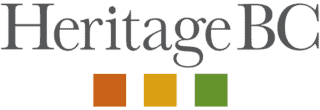2023 BC Heritage Award Winners
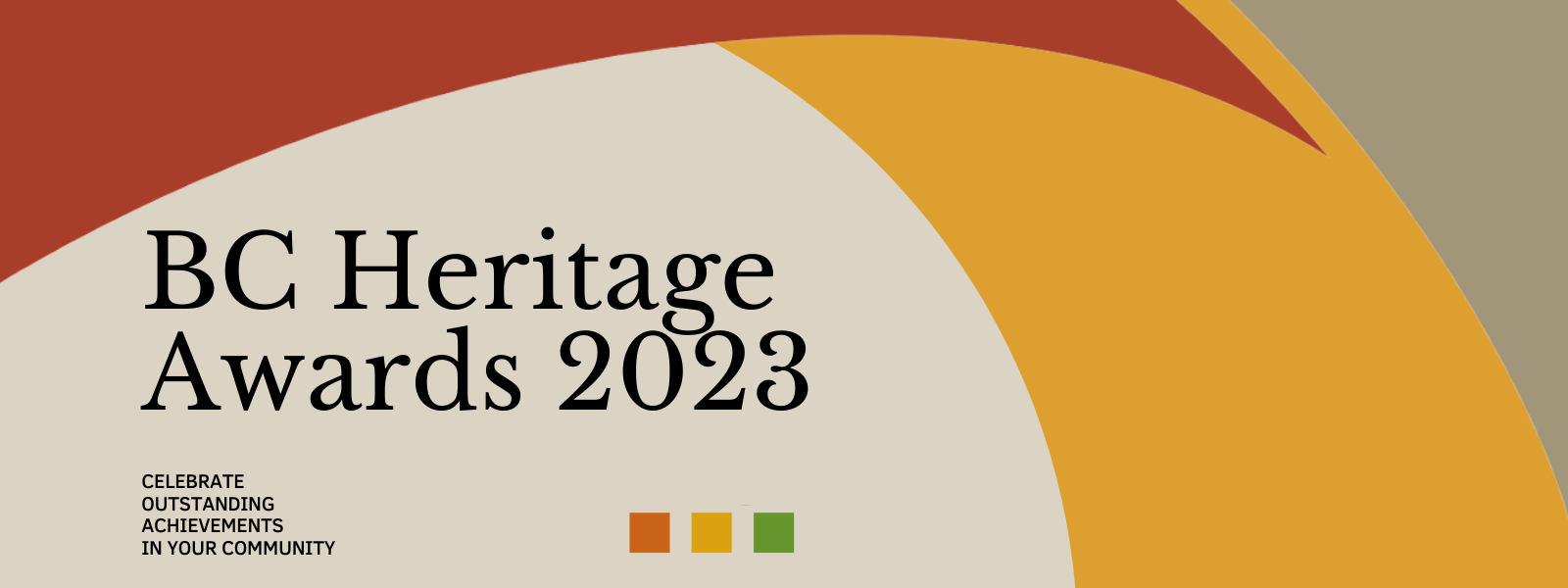
The BC Heritage Awards celebrate incredible achievements in heritage across the Province of BC every year. This page features the winners of our 2023 awards program. You can view our amazing award winners and read about what made each one stand out.
This year, winners were awarded in five categories.
Navigate to:
»Professional Achievement
» Conservation
» Education, Communications, and Awareness
» Volunteer
» Indigenous and Diverse Cultures
Professional Achievement
Lifetime Achievement
Ann Watson, Archivist, Sechelt Community Archives
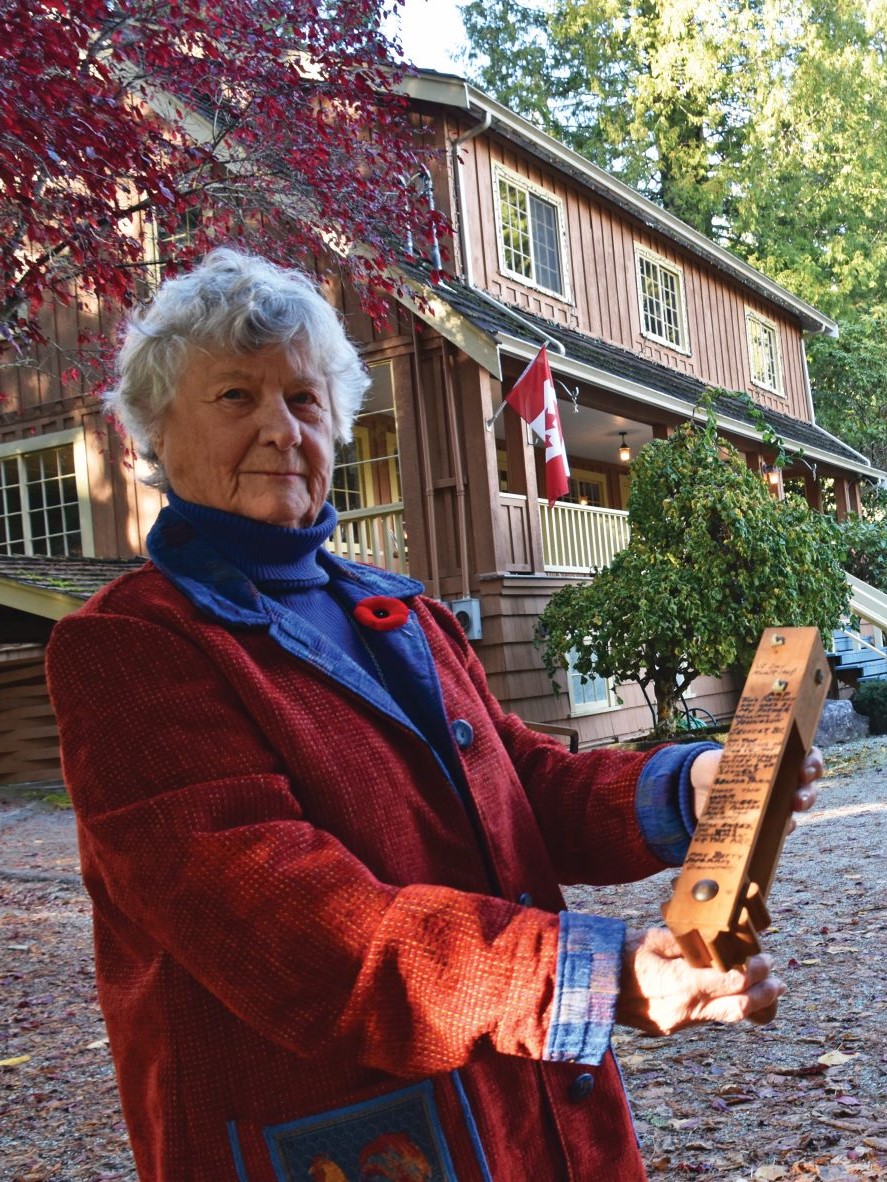
Active in the field of heritage for more than 40 years, archivist Ann Watson has been instrumental in the preservation of the unique history of Sechelt, BC. In 1997, the Sechelt Community Archives opened its doors to the public, and as its first and only employee, Ann took on the monumental task of transforming the large founding donation of materials into a professionally run community resource. From the Archives’ humble beginnings in a back room of the Sechelt Public Library, Ann oversaw the growth of the collection to three times its original size as well as its eventual relocation to a new larger space in 2020. In addition to keeping the Archives operating for the past 25 years, Ann has shone a spotlight on Sechelt’s history by writing regular newspaper articles, producing heritage displays, creating interpretive signage, leading walking tours, and hosting public presentations. Ann is passionate about preserving heritage, and well-known locally for her encyclopedic knowledge of Sechelt. A proponent of adaptive reuse of older buildings, Ann created a historic building registry for Sechelt that functions as an essential resource for municipal planners. Her impact has been felt by the countless historians, authors, and students who have relied on Ann for research assistance, and by the many volunteers she has mentored over the years. Ann thinks she might retire this year (at the age of 90), but her community knows her dedication to Sechelt’s history will continue for years to come.
Barbara Winter, Museum Director (Retired), Museum of Archaeology and Ethnology
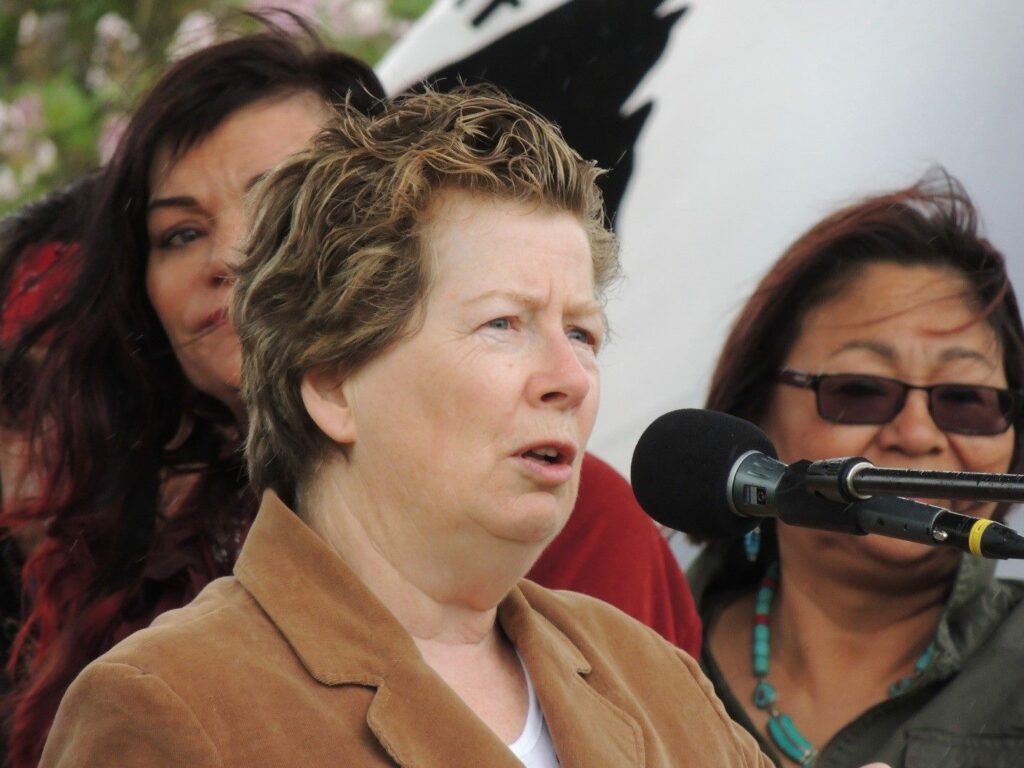
Dr. Barbara Winter recently retired from a lifetime of working in the museum field. Working at the Canadian Museum of Civilization and the Prince of Wales Northern Heritage Center she began working as the Museum Director of the Museum of Archaeology and Ethnology at Simon Fraser University in 1990. At the MAE, Barb built the museum up to where it is today. Her achievements as the director of the museum are extensive but pale in comparison to the impact she has had on the museum field in BC through her mentorship of countless students at SFU. Every museum in the lower mainland can or has counted Barbs students as employees. Her research assistant program took students interested in museum careers and gave them the knowledge, tools, and confidence to enter the field. Her legacy is in her former students who can be found working at and running museums all over B.C. and Canada.
Emerging Heritage Professional
Nicholas Guerreiro, Parliamentary Player Information Assistant - Legislative Assembly of BC
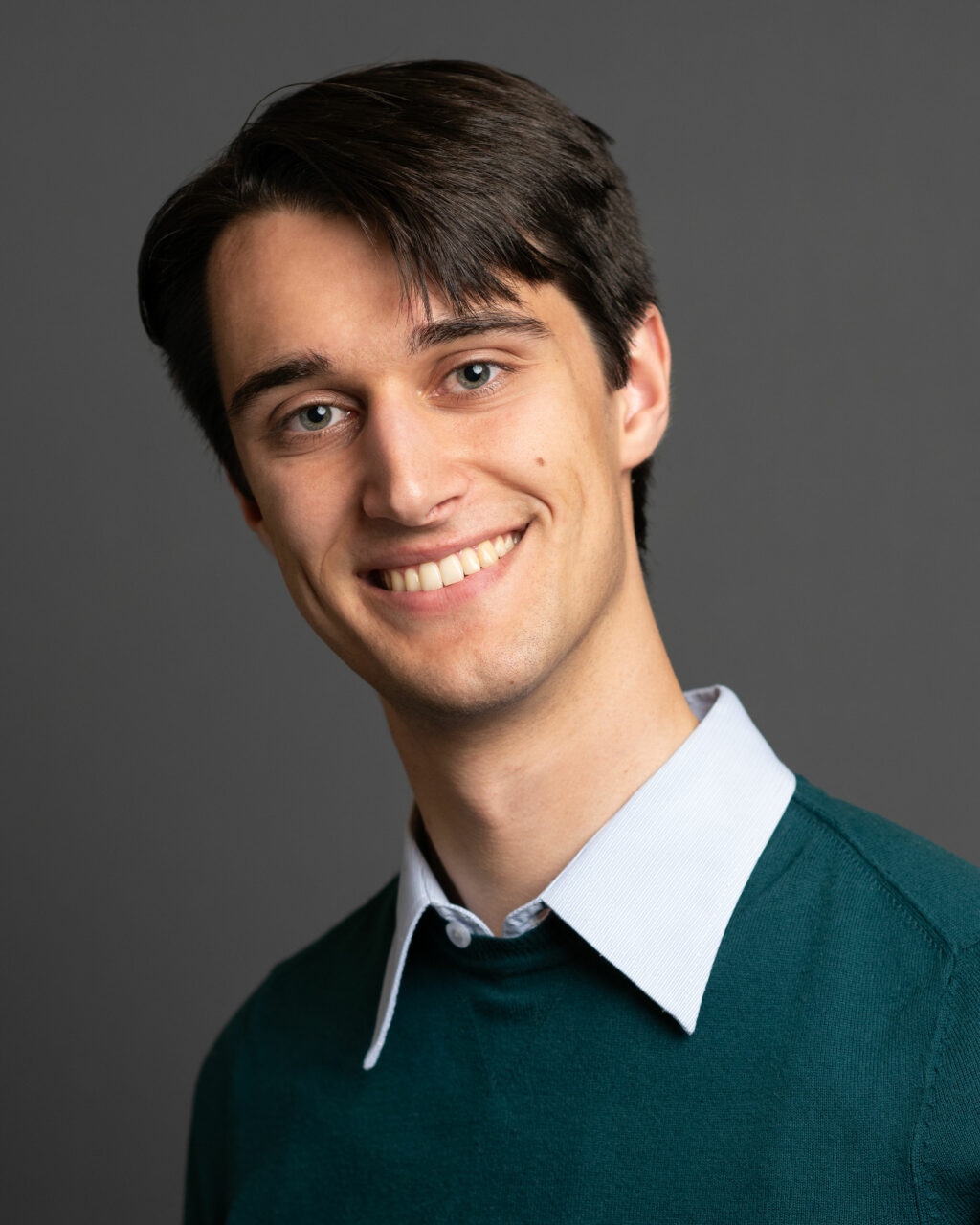
Nicholas Guerreiro has been working at the Legislative Assembly of British Columbia for less than five years, but in that time, he has become a key part of the Parliamentary Education Office team, as we saw with his award of the Education, Awareness and Communications Award. Nicholas has used his theatrical skills to invent and reinvent a variety of public programming. His creativity, commitment, and enthusiasm for history and democracy have helped make the Parliament Buildings an exciting place to visit for everyone.
Conservation
Outstanding
The Hollywood Theatre & Residences
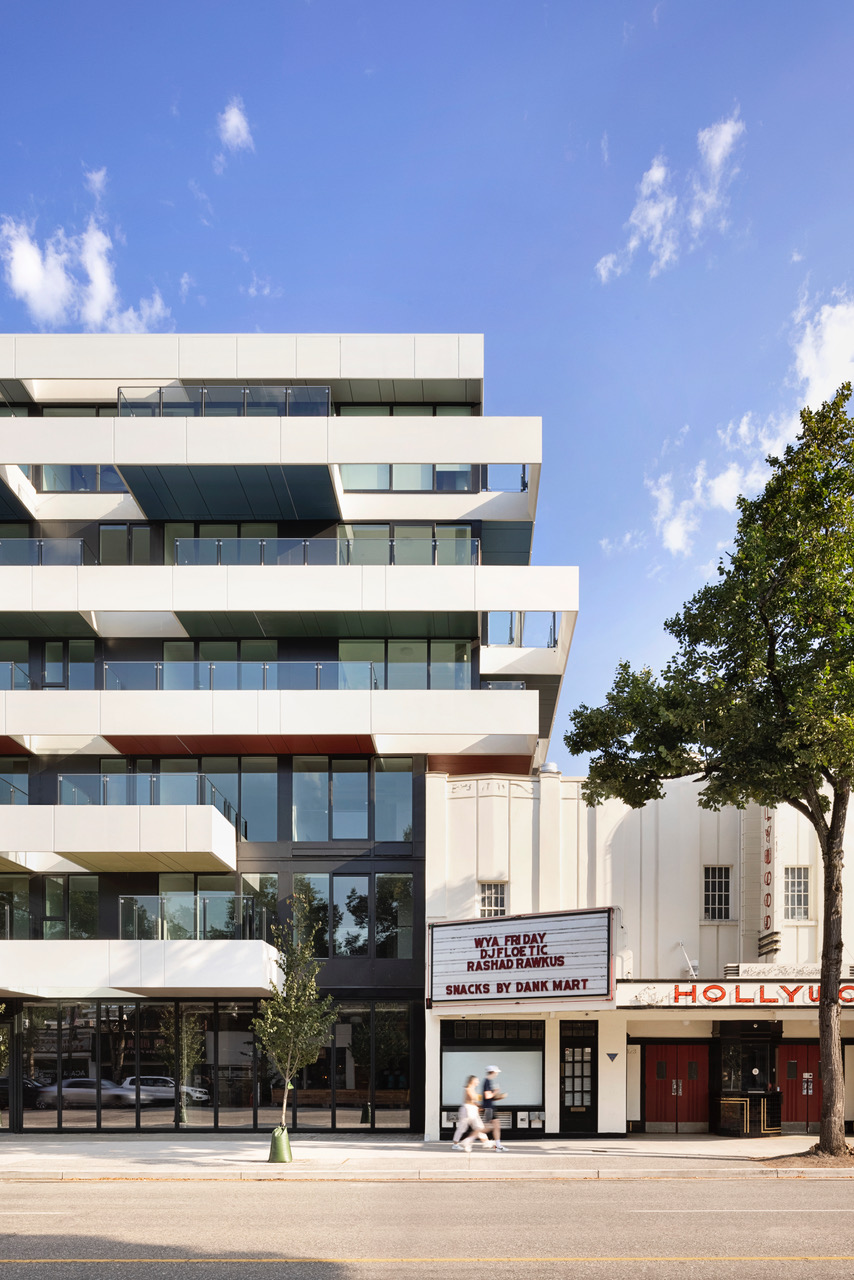
Harley Grusko, and Marianne Amodio, MA+HG Architects
Donald Luxton, Luxton & Associates
The Hollywood Theatre is one of the last surviving neighbourhood cinemas in Vancouver and a superior example of the Art Deco style. Architect Harold Cullerne designed the elegant theatre with neon signs reflective of the streamlined Jazz Age. Run by the Fairleigh family for four generations, it evoked the glamour and elegance of the 1930s, a time when Vancouver was growing rapidly, building landmark structures such as Vancouver City Hall, the Lions Gate Bridge and the Burrard Bridge, Art Deco icons that still define our city. This style proclaimed the modernity of the young city and a progressive attitude.
This project involved the conservation and adaptive re-use of the Hollywood Theatre and the construction of a new, six-storey concrete residential building. Through an innovative Heritage Revitalization Agreement and density bonus and density transfer to the adjacent site, an obsolete single-screen neighbourhood theatre was transformed into a multipurpose performance venue, that continues as a beloved cultural focus of its surrounding community, and as a place of gathering for all citizens of Vancouver. The new building takes care not to replicate the style of the original building, rather stands proud in its own architectural presence. The new building, like the Hollywood Theatre, will be read as a singular statement that resists the standard massing typical of Vancouver residential buildings. Because of this, the building will remain sensitive to its context while also providing a distinct identity of its own.
Hammond Forever House
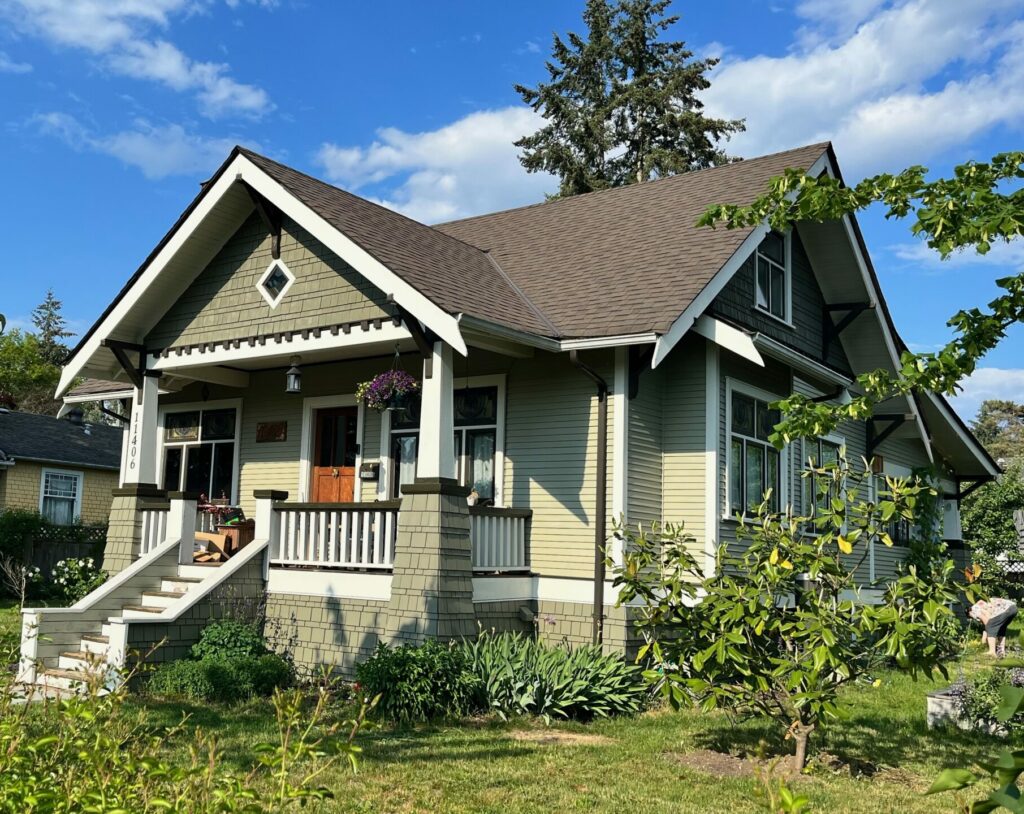
Leanne Koehn and James Rowley, Property Owners
The Hammond Forever House project is an innovative combination of heritage conservation and environmental leadership. The Whitehead property, which contains the Whitehead Cottage (built 1919) and the Whitehead Residence (built 1923), is an outstanding example of conservation of early settlement in Maple Ridge. The goal of the project was to conserve the two historic houses and achieve a net zero energy home.
Throughout the project original interior and exterior wood and glass details were restored, a modest sympathetic rear addition was built on the Whitehead Residence using salvaged and reused materials, and green design strategies were employed to achieve a net zero energy home.
The Whitehead property sits on the unceded shared territory of Katzie and Kwantlen First Nations. It is important to recognize that much of the capital used to carry out the conservation work and retrofit was derived from the property equity and the land, which created that equity, was never ceded by the Coast Salish Peoples.
Honour
Tod House
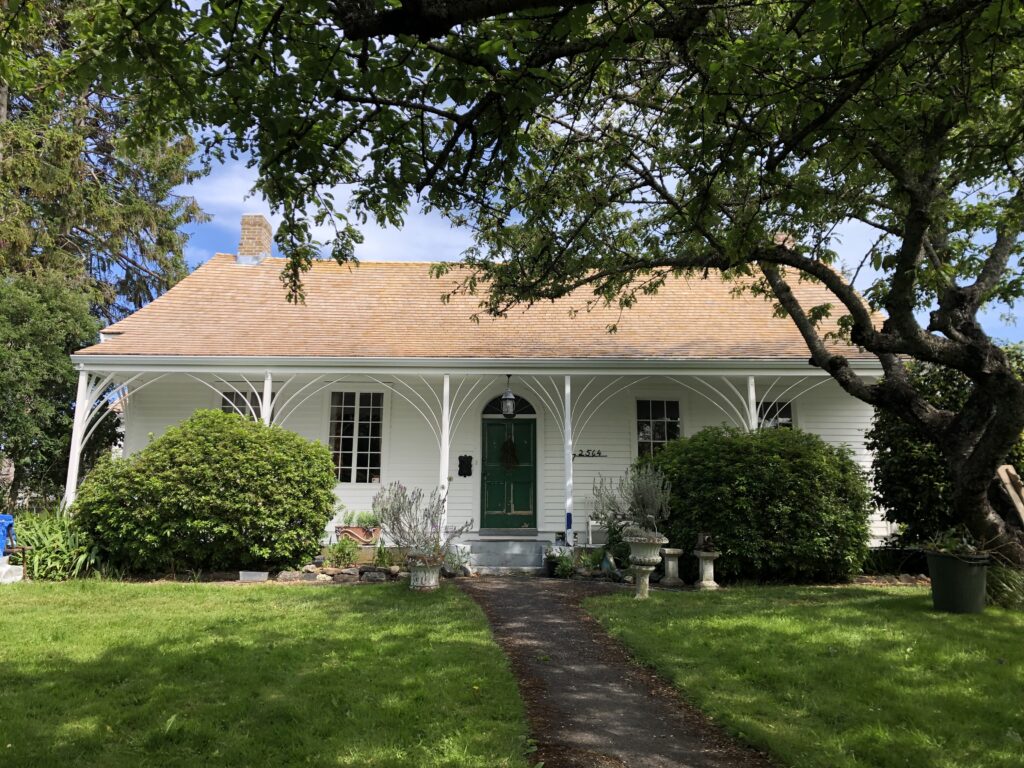
Stephen Lawrence, Project Manager, Thujacraft Ltd.
Gordon Macdonald and Ben Gourley, Owners, Heritageworks Ltd.
Gavin Chamberlain and Liam Hall, Owners, Heritage Masonry Ltd
Signe Bagh, District of Oak Bay
Karen Hunter, Project Manager, Colliers Project Leaders
The goal for the Tod House was to repair and conserve the exterior features and materials of theHouse, to ensure weather protection for the building fabric and address a growing number of weathering related issues that threatened the building. The roofing, gutters, chimneys, siding, paint, flashings, patios, wall to grade transitions, drainage and fencing were all addressed. The building is now fully protected from weather and will remain so for many years to come with normal maintenance.
In the course of the work, the team learned that the 1860 wing of the house is constructed of traditional heavy timber framing, using hewn Douglas fir timbers and mortise and tenon joinery. This construction method was known to exist on the earlier 1850 wing but its existence on the 1860 wing was new information. Tod house is one of very few examples of this construction method in British Columbia.
The Tod house is an example that should be looked to for Heritage conservation done right, with impressively minimal intervention.
Broadhurst & Whitaker Block
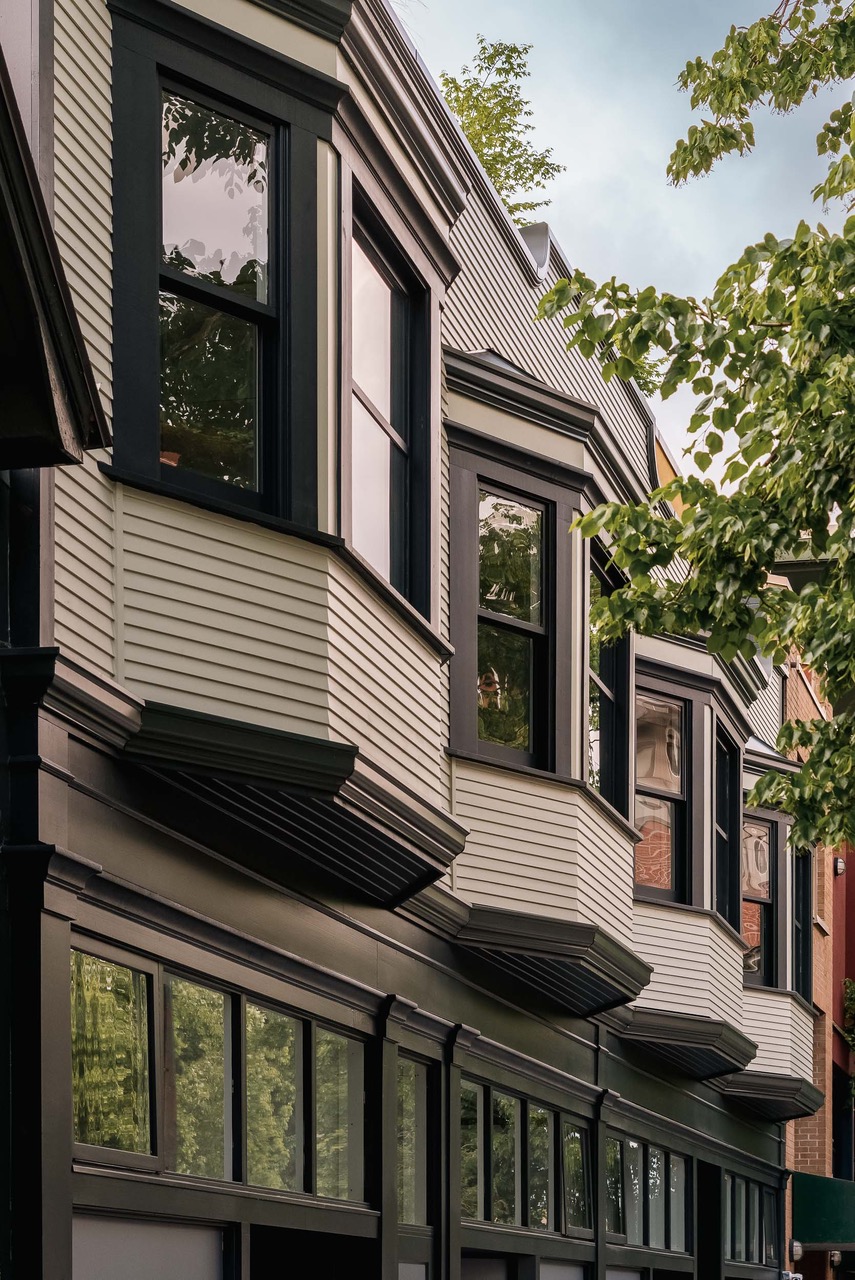
Marianne Amodio, Harley Grusko, and Lindsey Nette, MA+HG Architects
Donald Luxton, Luxton & Associates
The retaining and rehabilitation of the Broadhurst + Whitaker Block was done to ensure Heritage Designation with the City of Vancouver. Constructed in 1910, the building is one of the first mixed-use commercial and residential buildings in Vancouver. The reinstatement of both the physical building and its commercial use at grade, was able to create a ground-oriented community within a neighbourhood that is steeped in its history. With an enduring eclecticism that includes The Broadhurst & Whitaker Block is now home to eighteen residences and three commercial spaces, within the revitalized building.It serves as a great example of combining heritage conservation, sustainability and creative execution in an adaptive re-use project. It shows that heritage projects can increase density and fill in the missing middle.
Recognition
Royal Roads University Dogwood Auditorium: Learning and Teaching Auditorium
Stuart Rothnie, HCMA Architecture + Design
This award is for the historic conversion and adaptation of the Stable Block of the Dunsmuir Estate at Hatley Park in Colwood, now occupied by the Campus of Royal Roads University, to provide the new Sherman Jen Centre for Environmental Stewardship and International Partnership. The project demonstrates how effective and careful conservation of heritage resources not only preserves and safeguards heritage assets, but revitalizes them to support institutional identity, pride and ‘sense of place’.
Education, Communications, and Awareness
Outstanding
Unarchived
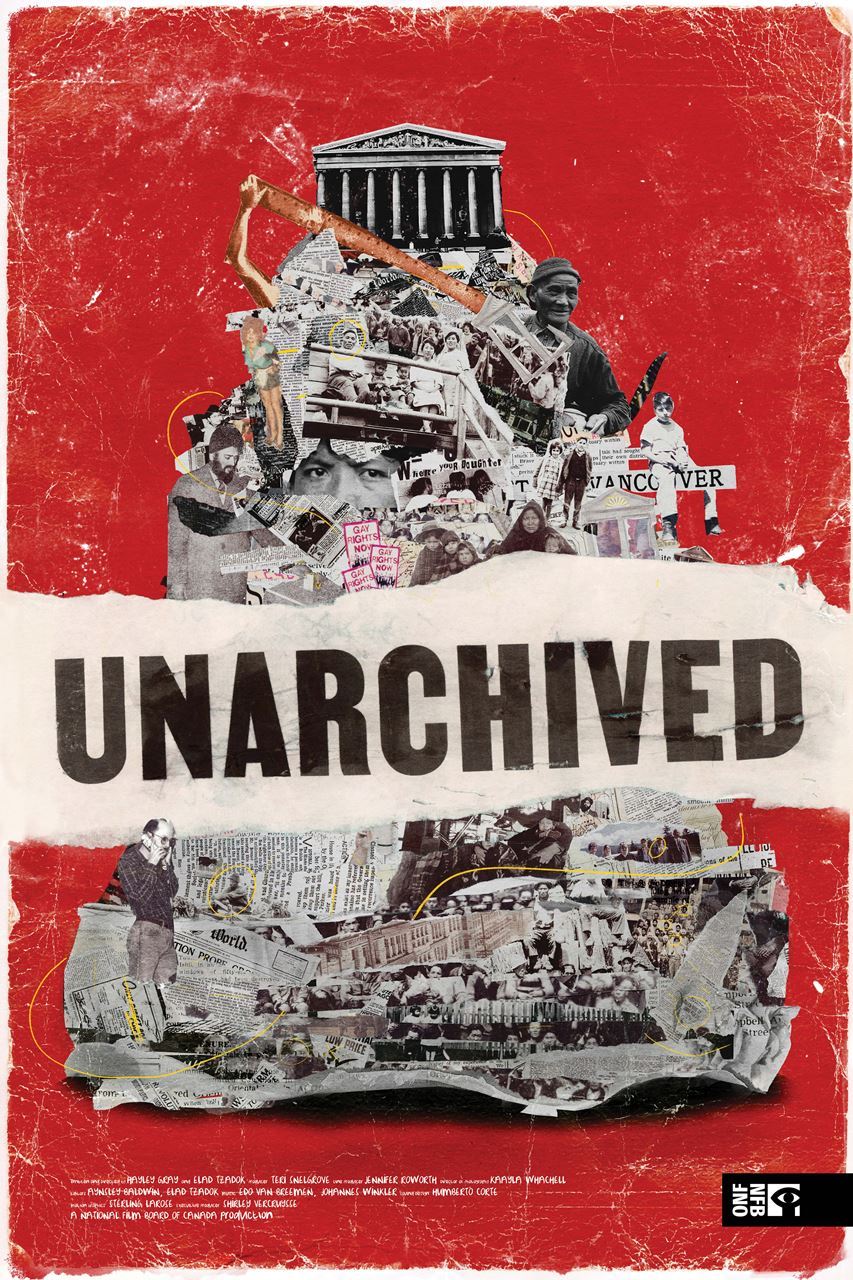
Hayley Gray and Elad Tzadok, Co-Directors
The documentary Unarchived highlights community archives across British Columbia to reveal some of what has been erased from the official record.
The people and places left out of traditional archives and museums are often determined by the dominant power, but as UBC’s Dr. Henry Yu states, “the process of silencing makes a lot of noise.” Local knowledge keepers are undoing these omissions and hand-fashioning a more inclusive history through family photos, newspaper articles and scratchy old VHS tapes.
Ron Dutton started the BC Gay and Lesbian Archive by collecting protest pamphlets, posters and even cabaret sets from the earliest days of Vancouver’s gay community. In the tiny mill town of Paldi, on Vancouver Island, a remarkable intercultural community was captured on Super 8 and 16-millimetre film by the founders and their families. On the landscape, anthropologist Dr. Imogene Lim points out how plants serve as reminders of Asian communities long gone.
These different archives tell stories of people building connection through work, play, protest, family and tradition. In so doing, they challenge larger institutions to re-examine and address older narratives that no longer reflect the totality of our shared experience. At the Trans Archive at the University of Victoria, a hidden past is documented and preserved. At the Royal BC Museum, staff work tirelessly to right historical wrongs and find a new path towards restorative justice for Indigenous people.
Through a collage of personal interviews, archival images and footage, and deeply rooted memories, the past, present and future come together, fighting for a space where everyone is seen and everyone belongs. History is what we all make of it. Watch the trailer here.
Honour
Parliamentary Past and Present Travelling Plays
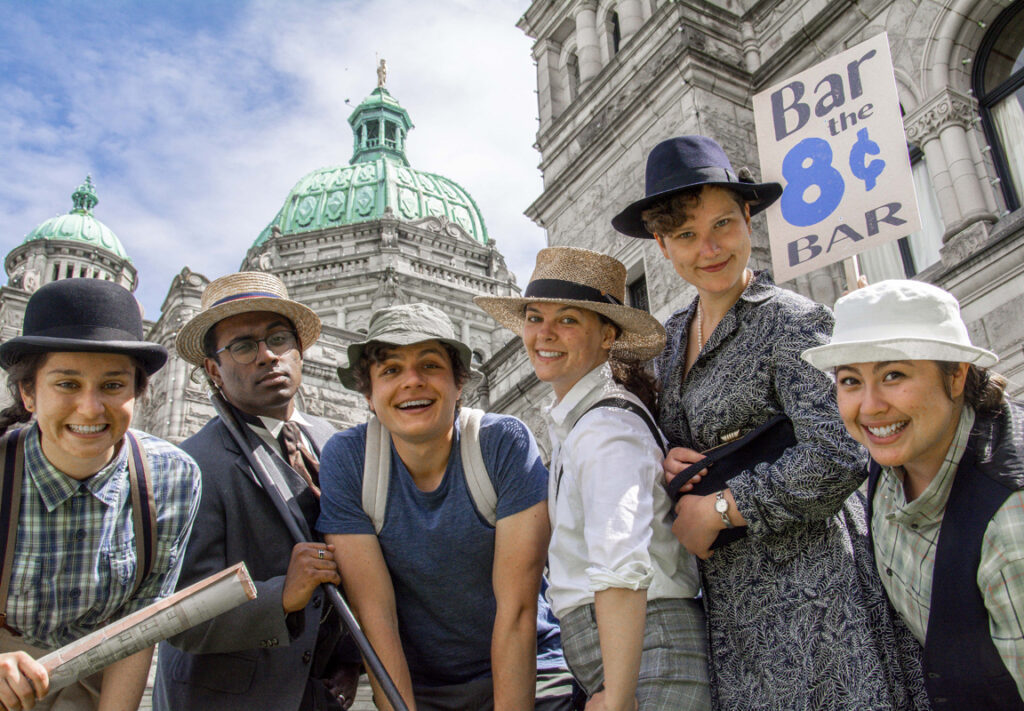
Parliamentary Education Office Team, Legislative Assembly of British Columbia
The Parliament Past and Present Travelling Plays whisk visitors around the Legislative Assembly of British Columbia and back in time, where they might find themselves waving signs at the 1947 Chocolate Bar protest, signing a voting petition alongside a suffragist, or chatting with notorious architect Francis Mawson Rattenbury. These brand-new 30-minute theatrical events explore how people fought for change in the past, and how the same tools can be used to make change in the present. The program serves as a great example of auditing existing programs to change the narrative for program audiences and guides, and how you can innovatively challenge the narratives within a colonial institution.
Lost Kootenays - A History in Pictures
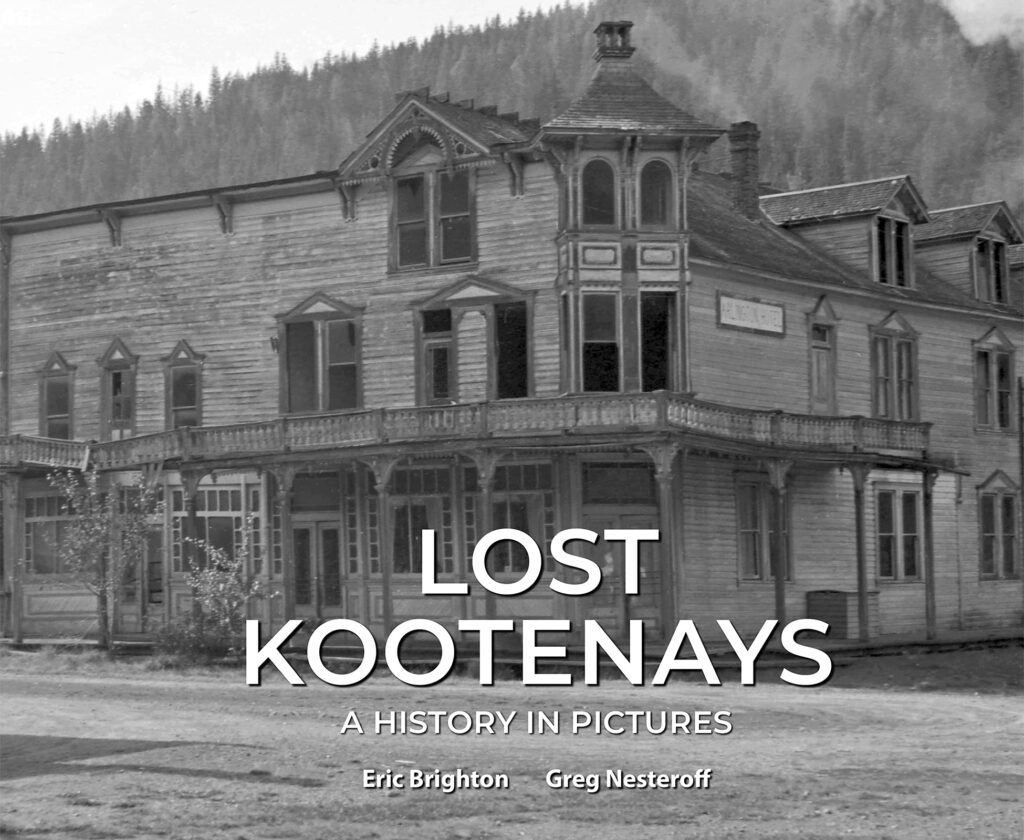
Eric Brighton and Greg Nesteroff, Co-Authors
Greg Nesteroff and Eric Brighton published their book, Lost Kootenays - A History in Pictures in October, 2021. The idea for the book started from a Facebook group with the same name and grew to a following of over 51,000. Before becoming co-authors, Greg Nesteroff and Eric Brighton were administrators of the page, which has 58K likes and over 65K followers.
Since publication, the book has been extremely popular, and was even showcased on Keith Baldry's bookshelf during his broadcasts. It has raised awareness about forgotten historic places in the Kootenays, as well as shining light on stories from previously unheard voices. In Greg's words: "It has about 130 photos that span from the 1860s to the 1950s. It covers many different themes related to the history of the Kootenays from transportation, to mining, to forestry and groups like the Doukhobors, Chinese Canadians, First Nations, Japanese Canadians and Indo-Canadians." On the success of the book, Brighton remarked, "the book and the Facebook page have become ingrained in Kootenay culture. Many people bought four or five copies of the book to give to all their family members.
Recognition
Blast From The Past
Joëlle Sévigny, qathet Museum and Archives Programs and Education Manager
Joëlle Sévigny began writing a monthly column for qathet Living magazine called Blast From The Past in April 2019 when she was the student coordinator for the Townsite Heritage Society at Henderson House. Joëlle's ability to write interesting and informative stories with a fresh, new voice and find accompanying photographs, quickly established her as a favourite with qathet Living's 15,000 plus readers. Her uncanny ability to bring history to life in her columns while working with current day events has made her historical column an anticipated read and relevant in today's world.
Saanich Heritage Passport
Saanich Heritage Foundation
Saanich Arts, Culture, and Heritage Advisory Committee, District of Saanich
The Saanich Heritage Passport is a collaborative project of the District of Saanich Arts, Culture, and Heritage Advisory Committee; and the Saanich Heritage Foundation. The self-guided tour generally takes one hour and 15 minutes to walk, or 15 minutes to cycle, excluding stops to admire the buildings. The 24-page booklet is designed to engage the reader, regardless of age. Over 200 copies of the passport were distributed in 2022, with the first handed out at the inaugural Saanich Multicultural Festival; the Festival took place in the same neighbourhood covered in the Passport. The District's Community Services Division requested additional copies to make available at events, and to provide to youth and seniors through their programming.
Lee Reid - community builder, educator, and author
Lee Reid, Granny Gardening Tours
Based in Nelson BC, Lee Reid has written books about community, culture, and heritage, and strives to build connections between people, places, and traditions in her research, writing, and community activism. She is the sole leader of Granny Gardening Tours in the summer months, bringing together neighbours from near and far to share their stories of their gardens and (often heritage) homes, and their experiences in nurturing and maintaining both. She is well known in the neighbourhood and broader community, befriending seniors who live alone and connecting them with herself and others to ensure they feel that they are cared for and seen in the community.
Museum on the Move
Abby Lizee, Community Engagement Coordinator, Maple Ridge Museum | Thorn Austin, Museum on the Move Assistant
Museum on the Move began as a response to the lack of space available in the Maple Ridge Museum for programming and community engagement. Museum on the Move allows the museum to leave the confines of their limited, colonial space and provide information and education in a more neutral setting. In 2022 the program made 18 appearances around the city and at community events, speaking on a variety of subjects, including environmental history, food security, and local monuments, as well as additional neighbourhood information depending on the location of the event. Through Museum on the Move, Maple Ridge Museum has interacted with thousands of Maple Ridge residents, bringing heritage alive in a new and exciting way.
North Shore Culture Compass
North Van Arts
The North Shore Culture Compass is free, online, GIS-based map that visualizes the rich cultural offerings of the North Shore. It is accessible on mobile and desktop and spans the entire North Shore Region, including the City of North Vancouver, the District of North Vancouver, the District of West Vancouver, and part of the territories of the Sḵwx̱wú7mesh Úxwumixw (Squamish Nation) and the səlilwətaɬ (Tsleil-Waututh) Nation. The map brings arts, culture, and heritage together in one place to create more visibility, awareness, and appreciation for the region’s cultural offerings. The map promotes social engagement, encourages new community interactions, and builds an understanding of what makes this shared place unique.
Indigenous and Diverse Cultures
Outstanding
Lunar New Year Drum Making and Puppet Show Workshop

Cherie Chai Kar Yee, Founder, on behalf of Speak Write Academy
Wesley Mitchell, Founder, on behalf of the UHNBC Prince George Traditional Drummers
Vicki Larsen, President, on behalf of the Chinese Benevolent Association of Prince George
Prince George Public Library
For Lunar New Year 2023, four organizations came together to host a Lunar New Year Drum Making Workshop at the Prince George Public Library. It was a highly successful event where about 350 people attended, and was made more accessibly by having the event free of charge. Cherie Chair, from SpeakWriteAcademy, organized the event in collaboration with the Chinese Benevolent Association who did a Traditional Lion Dance Performance, and the UHNBC Prince George Traditional Drummers who did an Indigenous Drumming Performance and taught the audience members how to drum and sing to an indigenous song. In addition to performing a puppet show which teaches about the Chinese New Year traditions, Cherie taught audience members how to make their own Chinese hand drums which the audience members used to drum along with the Indigenous Drummers for the Traditional Chinese Lions as they were performed with the huge Chinese drum.
This event was truly an integration of two different cultures – the Chinese and Indigenous drumming cultures. The whole event was a first of its kind for Prince George BC. Kids and adults were still talking about the event weeks after it happened.
Volunteers
Outstanding Impact Volunteer
Gord Hotchkiss and Don Rampone, Co-Chairs, La Nostra Famiglia Italiana Committee, Kelowna Canadian Italian Club

Don Rampone and Gord Hotchkiss are the co-chairs of the La Nostra Famiglia Italiana (Our Italian Family) Committee at the Kelowna Canadian Italian Club. Their mission has been to collect individual family stories and compile a more comprehensive history of the Italian contribution to this area.
The committee has been extraordinarily active in the past 5 years, releasing a volume of 30 “First Family” stories each June, running Family Tree Workshops and coordinating 6 information presentations each year.
Our flagship project has been Il Nostro Lascito (Our Legacy). We have been doing pre-production on a series of documentaries, each highlighting a different chapter of the Okanagan’s Italian Story. This fall, the first two documentaries will be shown – the story of the Giovanni and Rosa Casorso and their 8 sons and one daughter, the first Italian family in the Okanagan, as well as the story of the Italian sojourner labourers who built the Kettle Valley Railway and the irrigation works in the Central Okanagan (and who also built the rock ovens).
Together with all this, Don and Gord have also been coordinating with Kelowna Museums on a feature exhibit celebrating 140 years of Italian presence in the Okanagan.
Ruby Nobbs Distinguished Service: Honourable Mentions
Steve Norman, New Westminster Heritage Preservation Society
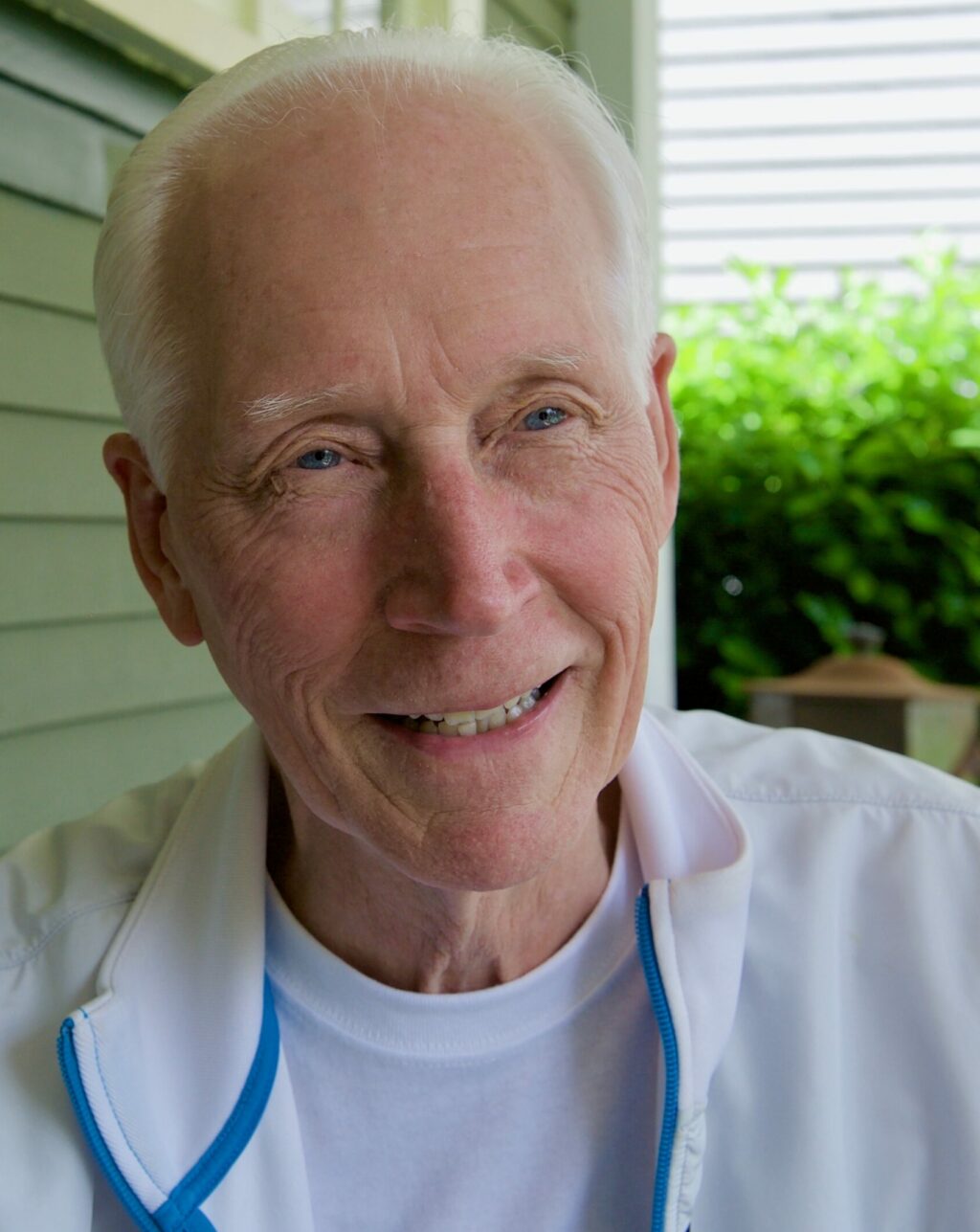
Steve Norman’s history of heritage volunteering began in 1979 when he and his wife Kitty moved to New Westminster and they connected with like-minded heritage preservationists. There was never a more determined and principled heritage enthusiast than Steve Norman. His sense of heritage justice is legendary. He long sought heritage conservation and design guidelines for the Queen’s Park neighbourhood. He served as a director of the NWHPS on/off for more than 30 years, and held the position of President of the Queen’s Park Residents Association for a period of time in the 1990s and then most recently served as its Vice-President.
He and then President Kathleen Langstroth together led the grassroots movement in 2016/2017 to help create a Heritage Conservation Area in the Queen’s Park neighbourhood. Their commitment to the HCA and the quest for the heritage holy grail cannot be overstated.
Steve is also being recognized for his role with the Heritage Homes Tour as a house volunteer--a position that involves representing the society as a guide on tour day. Steve, a retired teacher, has been a dedicated and knowledgeable tour volunteer with the most “volunteer hours” since the Tour's beginning in 1980. Steve has always been available and at the ready!
Virginia Saunders, Volunteer at Historic Stewart Farm
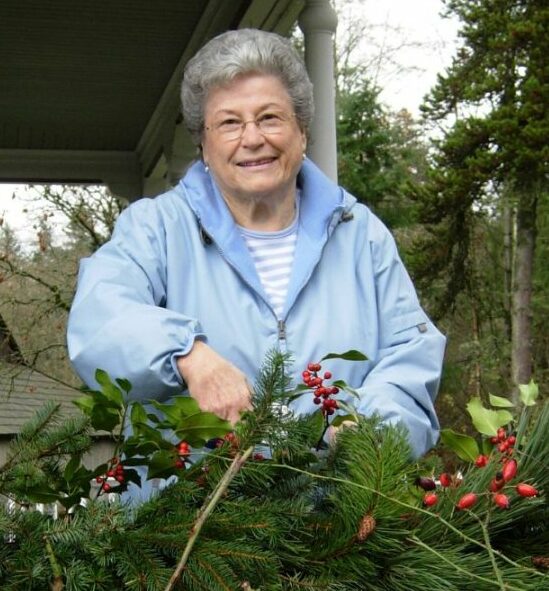
Virginia Saunders has been part of the volunteer team at Historic Stewart Farm (HSF) in Surrey, BC since it opened in 1988. Since then she has contributed over 5000 hours of volunteer service at the site, taking a lead role in a variety of public programs, school field trips, special events, exhibit displays, guided tours and more. As a leader on the team, Virginia has mentored countless staff and volunteers, sharing her knowledge and passion for the community’s history with everyone she meets.
Her dedication to heritage doesn’t stop when she leaves the farmhouse. Virginia represented HSF on the Surrey Heritage Services Community Advisory Board 1995-2005 and was an early member of the Friends of the Surrey Museum and Archives Society, which supported the future Museum of Surrey’s strategic planning and capital fundraising campaign. She has donated a number of items to Surrey’s heritage collection and archives, helping to build our understanding of the community in the 1930s and 40s, especially around WW2.
Virginia was a recipient of the Sovereign’s Medal for Volunteers in 2016, and continues to inspire all who work closely with her. We are truly grateful for her contributions to Surrey’s heritage.
Gerrie Danforth, Volunteer, Enderby & District Museum & Archives

Gerrie Danforth has embraced Enderby’s history wholeheartedly for close to 50 years. The Enderby & District Museum Society incorporated in 1973 and Gerrie was there soon after to help the museum become established. During the early years, Gerrie’s commitment, presence and support for the society provided the young group with a sense of legitimacy within the larger community, largely because she was a member of a long-time business family and operated with her husband a business for many years, but also because she was well respected by the community and had an association with numerous volunteer organizations. Gerrie contributed 10 years to the cataloguing system, and served as a director from 1978 to 2006. Despite being 98, Gerrie continues to volunteer at the museum up to four times weekly. Gerrie’s long-standing dedication to preserving, protecting and sharing local history should be recognized as an example of how one person’s volunteer efforts can leave a lasting legacy.
Ruby Nobbs Distinguished Service
Terry Raymond, Director, Yale & District Historical Society and New Pathways to Gold Society Co-Chair

Terry Raymond literally poured his life's energy into the welfare of Fraser Canyon communities and was a champion of B.C. Heritage, Indigenous and non-Indigenous. He was a colourful master-thread, woven into the lives of communities from Hope to Barkerville and especially his beloved Boston Bar. A graduate of Boston Bar Secondary, he lived in his community and he walked his principles all over the province, particularly in the Fraser Canyon that he loved so dearly. He wore many hats: paramedic, Fraser Valley Regional District Director, Siska Traditions Society Administrator, Gold Country Communities Services Society and Gold Rush Trail Committee Director to name but a few. But the hat Terry seemed to like most was a stylish top hat, which he wore in period costume at many an occasion as he showed his support for the values that defined him and he infused into the New Pathways to Gold Society: Reconciliation, compassion, building local economies through heritage tourism, Multiculturalism and creating a more inclusive narrative of our shared history. Terry’s part in that narrative was large, as was his role in guiding the Yale & District Historical Society, which had a special place in his heart. He worked for so long and so closely with First Nations that he was given the name "White Bear." He put in countless volunteer hours and is responsible for many heritage assets being restored and sites recognized. His legacy will live on through all the lives he touched and made better. Terry died after a long battle with cancer in April 2022. Three organizations, the Yale & District Historical Society, New Pathways to Gold Society and the Spuzzum First Nation jointly nominated Terry for this award, an indication of the impact he had on his community.
